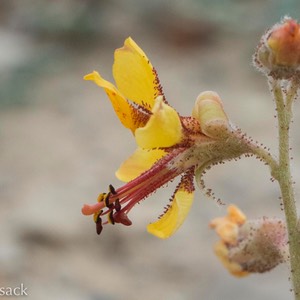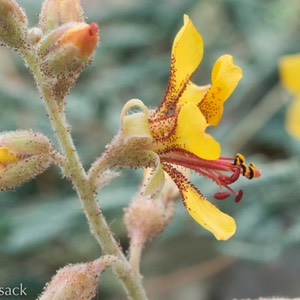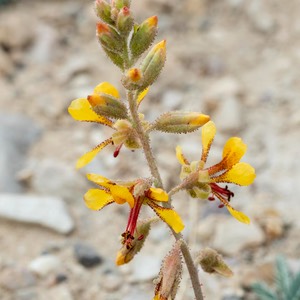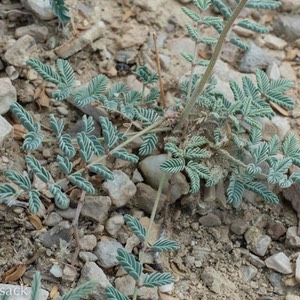Click on the images below to see larger versions.
| Scientific Name | Hoffmannseggia glauca | USDA PLANTS Symbol | HOGL2 |
| Common Name | Indian Rush-pea, Sickle-pod Rush-pea, Hog-potato | ITIS Taxonomic Serial No. | 503048 |
| Family | Fabaceae (Pea) | SEINet Reference |
Click Here |
| Description | Habitat: Sandy and alkaline soils in open areas, disturbed sites, roadsides and edges of cultivated fields. Plant: Erect perennial 6 to 12 inches tall; usually several stems with occasional stalked reddish glands and sparse, short white hairs. Leaves: Bi-pinnately-compound leaves, 2 to 5 inches long divided into 5 to 11 pinnae that are further divided into 5 to 11 pairs of small oblong to ovate leaflets, 1/8 to less than 1/3-inch long; leaflet surfaces are usually smooth; petiole and rachis are glandular. Inflorescence: Terminal racemes of flowers not quite radially symmetric with a gap between the 2 lowest petals; yellow petals fading to reddish, 3/8-inch long, the narrow basal portion lined with red stalked glands; glandular and pubescent stamens shorter than petals; 5 linear to linear-oblong glandular-pubescent sepals about 0.3 inches long. Bloom Period: March to September. Fruit: Sickle-shaped pods 3/4 to 1-5/8 inches long and less than 1/3-inch wide, may be smooth, glandular or pubescent. References: "Manual of the Vascular Plants of Texas" by Correll and Johnston, "Wildflowers of Texas" by Michael Eason and SEINet. |
BONAP Distribution Map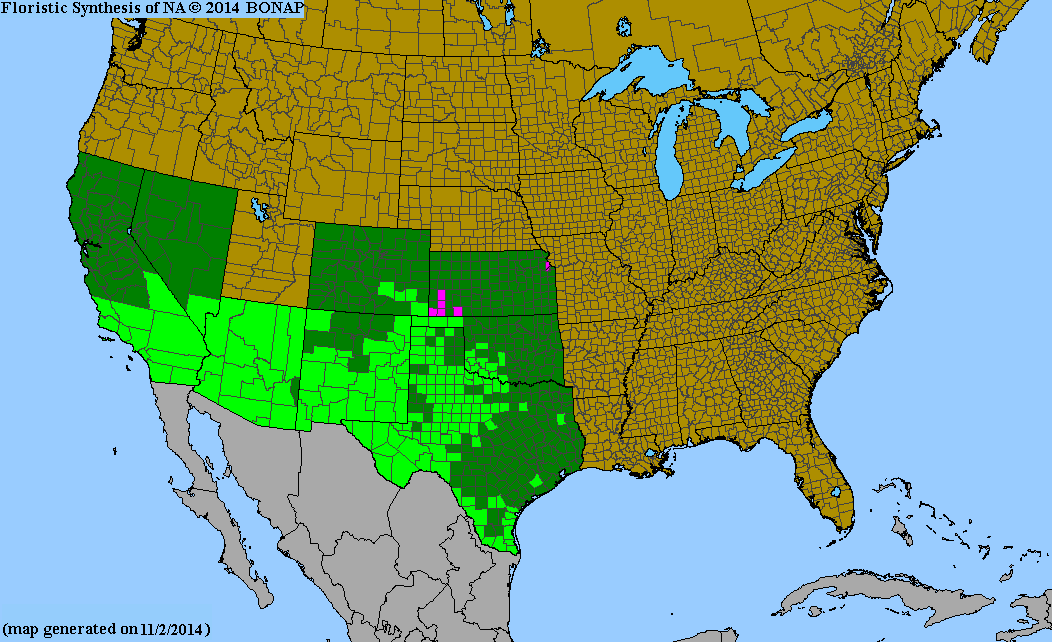 |
Texas Status: Native |
